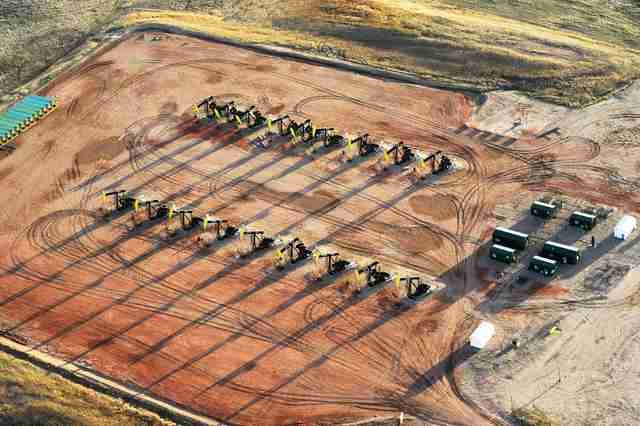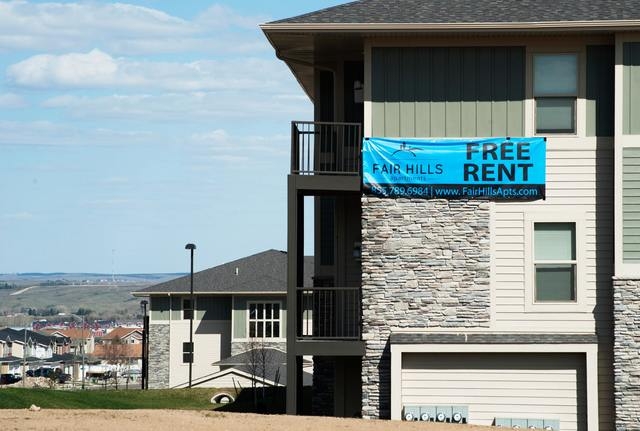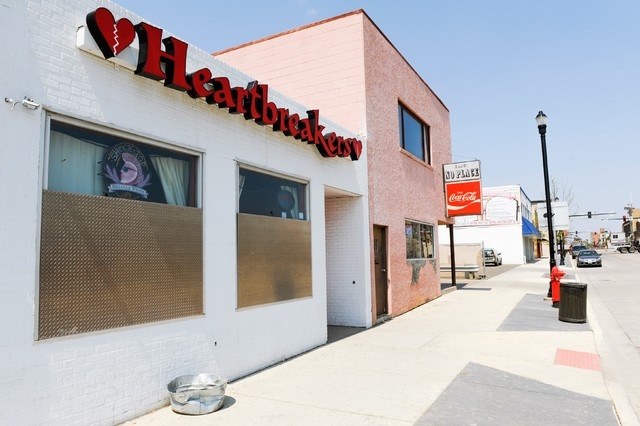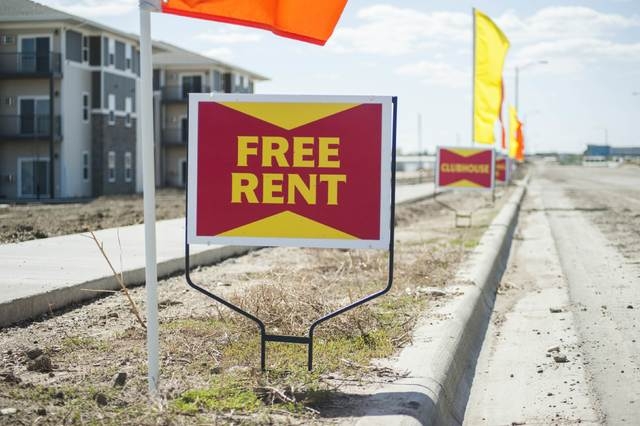North Dakota’s workers, businesses suffer as oil boom goes bust
WILLISTON, N.D. — Dave Van Assche didn’t fret too much when oil prices started to slide in late 2014.
The postal services business he had built over three short years was thriving, catering to the tens of thousands of people who, like him, had streamed into North Dakota to strike it rich during an unprecedented oil boom.
But the price drop quickened, due in part to a supply glut from the 1.2 million barrels of oil North Dakota was pumping each day. Within a year, oil prices were down more than 70 percent, and North Dakota’s oil rush stalled. The daily take at Van Assche’s business has sunk from a peak of $2,500 to at best $600 now.
Unwilling to lay off his four employees, Van Assche has been taking short-term jobs around the country to cover costs. He cleaned corn residue from rail cars in Ohio last month. Up next: cleaning a defunct nuclear power plant in California. Van Assche’s wife, finance manager for the business, took a job as a substitute teacher for Williston’s public schools.
“My business was decimated,” said Van Assche, 29 years old. He prays for an oil-price jump, “but now it’s very quiet.”
By 2014, the U.S. energy boom, supercharged by the revolution in hydraulic fracturing, or fracking, had made North Dakota’s economy the fastest-growing in the nation. Its unemployment rate was lowest among states. Its gross domestic product of roughly $50 billion that year was more than double 2002 levels.
The pain for much of last year was mitigated as aggressive price hedges and similar maneuvers kept the industry profitable. But those tactics have stopped working. North Dakota’s economy shrank 3.4 percent in the third quarter of last year, the weakest performer in the nation. Worse numbers for the end of 2015 and beginning of 2016 are expected in a federal report to be released in June.
All facets of the oil boom — including the people, like Van Assche, who supported it — are now in retreat. It’s a stunning reversal of fortune for a state whose governor, Jack Dalrymple, vowed in 2014 that he would not blink in the fight with OPEC for global oil market share.
More than 80,000 people poured into North Dakota, looking to stake their future on the fracking economy. The state’s Bakken oil patch, centered here in Williston, was a magnet for oil workers, business investors and job-hungry folks.
That future has evaporated. Those who haven’t packed up and left the Bakken are facing a new reality of smaller budgets, fewer residents and the physical detritus of a building boom that left behind hundreds of empty apartments.
Williston’s Walmart has cut hourly pay 15 percent. The Salvation Army, facing slipping donations, reduced gasoline and food assistance by a third. Statewide, oil tax revenue is down nearly 70 percent from this time last year.
“No one has any money to spend here anymore,” said an exotic dancer at Williston’s Heartbreakers strip club. She estimated that tips had gone down more than 60 percent since last fall.
Until recently, oilfield roughnecks were making more than $100,000 a year on average. Few command those salaries today. Many of those roughnecks used to line up outside Heartbreakers every day for its 4 p.m. opening, regardless of the weather, which plumbs 0°F in the dark of winter.
It was a tough crowd most nights: Heartbreakers installed metal panels over its windows to deflect stray bullets after one patron fatally shot another in 2013.
If frigid temperatures and the risk of violence couldn’t keep them away, the economy can: One recent evening, Heartbreakers attracted only three customers. Since then, the club’s owner, Jared Holbrook, has closed Heartbreakers and is planning to reopen the venue in coming days as Williston’s first gay bar.
On the plus side, rates of syphilis transmission dropped 16 percent statewide last year from the 2014 peak, state officials said in April.
Williston’s 2nd Avenue West, the main thoroughfare nicknamed “Million Dollar Way,” is pockmarked with vacant storefronts and empty parking lots. Aaron’s Rent-To-Own, a retailer of televisions and video game consoles, shuttered two months ago. Prices for industrial real estate - warehouses and the like - have dropped nearly 40 percent in the past year.
Many people who remain in the area are adjusting to lower salaries and dwindling career options.
“There’s some people coming in who have never visited us before,” said Joshua Stansbury, a captain with the Salvation Army’s Williston branch. “They’re a little bit ashamed to now ask for help.”
‘ALL YOUR EGGS IN ONE BASKET’
North Dakota has lived through cheap oil before.
Booms and busts in the 1950s and 1980s left many of the state’s western communities mired in debt. Williston didn’t pay off the millions of dollars it owed from municipal projects of the 1980s oil boom until the early 2000s.
Despite that experience, many welcomed the infusion of capital when Continental Resources Inc, Whiting Petroleum Corp and other oil producers began using horizontal fracking in 2008 and 2009 to tap the 7.4 billion barrels of oil estimated to lie beneath their feet.
New roads, schools, community centers and other public facilities began sprouting up, funded largely by oil tax revenue.
Now, Continental and others have stopped fracking altogether in North Dakota. Statewide, there are only eight crews fracking new wells for the few companies still willing to pay for the service. Two years ago, there were 45, a peak for the teams that pump water, sand and chemicals deep underground to extract oil and natural gas.
“This boom, it’s over, at least it feels that way,” said Mark Ohl, who lost his job on a drilling rig after Continental canceled its contract. “But if you don’t know the oil industry is cyclical, you’re an idiot.”
Ohl now spends days hunting for jobs and drinks Pabst Blue Ribbon beer most nights at Cattails, a Williston dive bar with a deer head and Bud Light beer mirrors pinned to the walls.
The slowdown has also inflicted pain on community budgets. Williston’s debt and other liabilities nearly quadrupled from 2008 to 2014, to $158 million, as the city sought to keep pace with growth.
Yet the city’s sales tax receipts fell 47 percent in March from a year earlier, according to the state treasurer.
Moody’s Corp, the credit rating agency, downgraded Williston’s general obligation bonds in March to junk status, citing the city’s reliance on those sales taxes to repay debt.
“Putting all your eggs in one basket can be very risky, and I think we’re seeing that bear out in Williston and North Dakota now,” said Hetty Chang, a Moody’s analyst.
Statewide, Governor Dalrymple ordered agencies to trim 4 percent from their budgets to offset a $1 billion budget gap. The state will end free vaccines for children as part of the cuts. The University of North Dakota System is laying off more than 130 employees.
The state does have a $3.67 billion Legacy Fund set up as a type of endowment to preserve some oil tax revenue. But the fund’s principal and interest can’t be touched until 2017.
Tax receipts are down in part because folks like Jon Ritchart are leaving. With his pay cut 30 percent and the bonus eliminated for his job heating water for fracking — a gig that once paid him $130,000 a year — the 60-year-old is headed back to Washington state.
“I can feed two people at home for a month for what it costs me to eat in Williston for a week,” Ritchart said. “I can’t afford to stay here.” Food and other basic goods remain expensive in the remote region.
As the good times rolled, demographers bullishly predicted Williston’s population would hit 50,000 by 2020. Since last summer, Williston’s population has shrunk 16 percent to 26,533, according to the city’s wastewater data, which planning officials rely on in the absence of more-precise U.S. Census measurements.
United Airlines ended a direct flight from Williston to global oil hub Houston in early April. Home Depot Inc will close its Williston store this month. FedEx Corp, facing a steep drop in mail volumes, runs one daily delivery plane to Williston, down from three a year ago.
FedEx’s move is due in part to the drop in business at Van Assche’s three postal services shops. They helped the state’s new itinerant oilfield workers send and receive packages, print resumes and business cards, and fax loan and rental contracts.
A roadside advertisement for the stores boasted they could ship guns and heavy freight. Today, they sit eerily quiet.
“We’re cutting costs in every way, shape and form that we can,” Van Assche said. “This boom and bust thing has been a lot of fun,” he added, “but I don’t want to live the rest of my life like this.”
Four years ago, Marcus Jundt opened the Williston Brewing Company, a once-popular lunch spot that now has dozens of empty tables come noon. A popular restaurateur in Texas, Jundt — who has a framed picture of himself with President George W. Bush at the Williston eatery’s entrance — thought he could replicate the success in North Dakota.
Revenue at the restaurant, Jundt said, is down 60 percent from a peak in 2013. “When the rest of the U.S. economy was coming out of the Great Recession, Williston offered people a chance to provide for their families and make a lot of money,” Jundt said. While he doesn’t expect to close, he has had to lay off staff. “It’s not the same anymore,” he said.
‘IT’S A RECESSION’
In downtown Williston, near the strip club, a $15 million building with retail, residential and office space opened last March, on St. Patrick’s Day. All of the retail spots and more than half of the apartments sit empty.
“It seems like people are on the fence, waiting,” said Paul Russo, a vice president at The Renaissance Cos. The developer named the property Renaissance on Main, thinking it would serve as a symbol of western North Dakota’s rebirth.
Instead, it has become a monument to the overbuilding that continues in a region quickly losing residents. The 900 apartment units under construction today in Williston will soon join the more than 10,000 already built since the boom began in 2009, according to a study from THK Associates, an architecture firm.
At Prairie Pines, an apartment complex in Williston owned by private equity fund KKR & Co LP, nearly half of the 330 units remain empty even after rates were halved in late 2014.
Advertisements throughout Williston, Watford City and other oil communities offer two or three months of free rent, a far cry from the boom, when rents rivaled those in New York City and San Francisco.
Lacey Blank McCormick moved with her three children into a three-bedroom Williston apartment in March, paying $1,500 a month. As recently as January, the same apartment went for $1,800 a month.
“This area is seeing a slowdown, for sure,” said McCormick, who sold her engagement ring for $1,250 last month to pay down debt and took a second job at a deli to augment her pay as an administrative assistant at an engineering firm.
Less than a third of Williston’s 2,300 hotel rooms are full on any given night. The average hotel nightly rate is $99, down 23 percent from last fall.
Williston’s school district is opening a $57 million high school this fall that was built to hold 1,500 students. Officials expect only 1,000 to enroll, the same number as at the existing school building.
Williams County, which includes Williston, still plans to spend $55 million on a new jail and $250 million on a new airport, despite a decrease in crime and 39 percent drop in plane boardings in the past year. Funding will come from cash on hand, loans from the state bank and grants from the federal government.
Politicians have taken to a common refrain that the oil price drop could actually be a good thing for the Bakken region by offering a chance to recover from the excesses of the boom.
“Williston is still open for business,” said Shawn Wenko, head of the Williston Economic Development office, a city agency charged with diversifying the economy.
A few have benefited by sticking it out while others have fled or collapsed. “All of our competitors have gone out of business,” said Jon Greiner, owner of Basin Safety Consulting, which trains oil companies on safety techniques for handling deadly chemicals. “Our existing clients are giving us too much work.”
That’s an exception, however. Staff at the state agency JobService ND who spent the past five years scrambling to help fill jobs now find themselves busy with unemployment insurance applications. The agency hosted a Williston job fair in early April for 375 jobs. More than 1,250 applicants showed up.
Stephen Hopkins, 31, moved to Williston in early 2014 from Wisconsin with $148 in his pocket and $40,000 in debt. He soon landed two jobs - one bartending, the other at a local retailer of oilfield work clothes.
Within 18 months, he had paid off his debt, saved $20,000 and bought a new car. He swore he wouldn’t leave Williston without $100,000 in the bank.
Then, last fall, he lost his retail job. Tips at his bartending job dropped more than 40 percent. Hopkins decided to return home with the money he had in the bank.
“Bye Bye, Bakken!!!!” he wrote in a late March Facebook post.


































